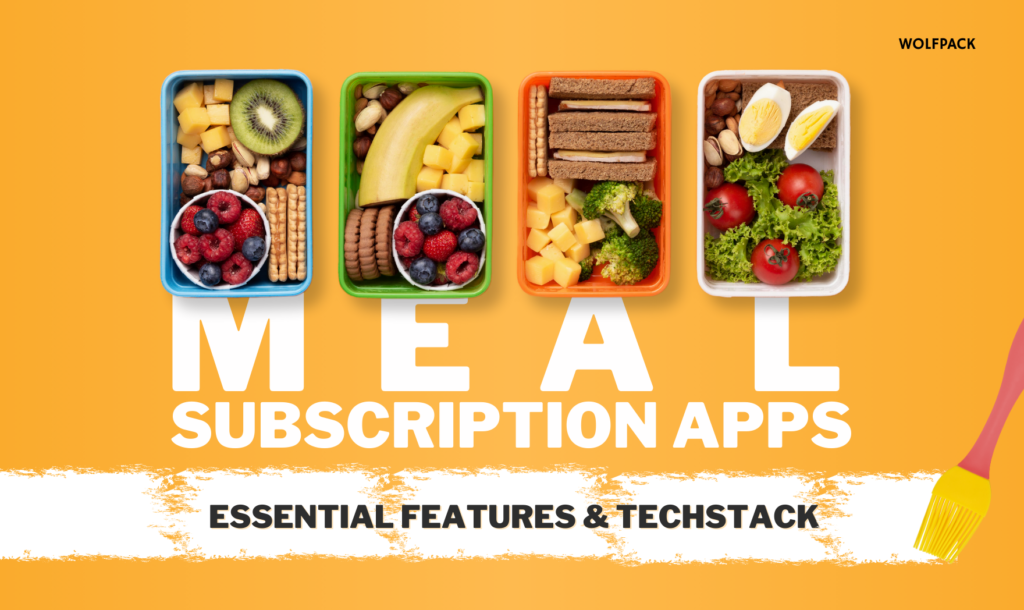
Meal subscription apps have gained significant traction in recent years. These apps cater to the growing demand for convenient, healthy, and diverse meal options delivered right to the customer’s doorstep. Entrepreneurs who want to enter this market must grasp the main features and technology stack required to create a successful meal subscription app.
Why Meal Subscription Apps Are Trending Now?
The rise of meal subscription apps is no coincidence; here’s what’s behind the surge:
- Busy Lifestyles: With increasing work hours and hectic schedules, consumers are seeking convenient meal solutions that save time and effort.
- Health Awareness: There is a rising trend towards healthier eating habits. Consumers are more conscious of their dietary needs and preferences, such as vegan, keto, and gluten-free diets.
- Pandemic Influence: The COVID-19 pandemic has accelerated the adoption of online food services as people avoid dining out and prefer the safety and convenience of home-delivered meals.
- Technological Advancements: Innovations in mobile technology and logistics have made it easier to offer seamless subscription services.
- Customization and Variety: Meal subscription services offer a wide range of customizable options, catering to different tastes and dietary requirements.
Market Growth
The meal subscription app market continues to experience significant growth worldwide. According to Grand View Research, the global meal kit delivery market is expected to grow at a compound annual growth rate (CAGR) of 13.02% from 2021 to 2028. Established players like HelloFresh, Blue Apron, and Sunbasket have witnessed significant growth in the US and other developed markets. Internationally, companies like Marley Spoon (US & Australia) and Gousto (UK) are catering to local preferences with their diverse meal plans.
In India, the online food delivery market is thriving. Statista projects the market to reach a value of USD 13.13 billion in 2024. Meal subscription services are a key contributor to this expansion. Companies like FreshMenu and Oota Box are prime examples, capitalizing on the trend by offering diverse meal plans that cater to local tastes and dietary needs. These services have become increasingly popular among urban professionals seeking convenience without sacrificing quality and nutrition.
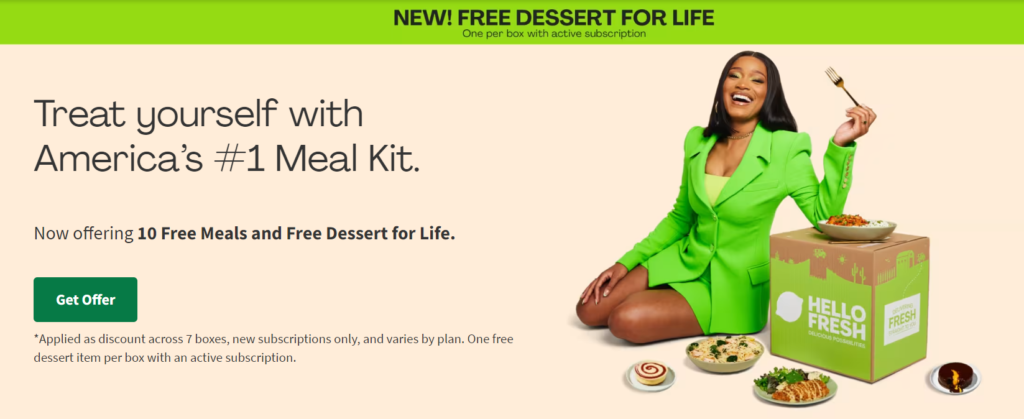
Understanding Your Target Market
Before diving into the technical aspects, it’s essential to understand your target market. Identify your potential customers, their preferences, and pain points. Conduct thorough market research to gauge the demand for different types of meal plans—vegan, keto, gluten-free, etc. Analyze your competitors to identify gaps in the market and potential areas for differentiation.
1. Demographics
- Age: Busy professionals aged 22-40 are a core demographic, but the market is expanding.
- Young professionals (22-30): Convenience seekers with disposable income, may be new to living alone and cooking.
- Families with young children (30-45): Value time-saving solutions and healthy meal options for their families.
- Income: While disposable income plays a role, affordability is becoming a bigger factor. Look for services catering to mid-range income earners alongside premium options.
- Location: Urban and suburban areas with high concentrations of working professionals and young families are prime markets. However, subscription services are expanding to peri-urban and even rural areas with reliable delivery networks.
2. Preferences
Dietary Preferences:
- Plant-based options are crucial, with a focus beyond just vegetarian to cater to vegans, flexitarians, and those with allergies or specific dietary needs (e.g., gluten-free, keto).
- Consider health-conscious options like low-carb, low-sodium, and portion-controlled meals.
- Explore ethnic cuisine preferences within your target region.
Cooking Preferences:
- Gauge the desired level of cooking complexity. Busy professionals may prefer pre-prepped ingredients and quicker prep times, while others might enjoy a more involved culinary experience.
3. Pain Points
- Time Constraints: Busy schedules are a key pain point. Highlight the time saved by meal subscriptions compared to grocery shopping and meal planning.
- Meal Planning and Grocery Shopping: Many users dislike the repetitive nature of meal planning and grocery shopping. Focus on the convenience of pre-portioned ingredients and curated meal plans.
- Food Waste: Highlight solutions to minimize food waste, such as precise portioning and recipe variety.
4. Competitor Analysis – Digging Deeper
- Blue Apron’s Success: Analyze their diverse recipe offerings (e.g., international cuisines, dietary restrictions) and premium ingredient quality. Consider replicating their strengths or offering a unique value proposition (e.g., focus on local ingredients, organic produce).
- Beyond Blue Apron: Research other successful competitors. Look at HelloFresh’s focus on family-friendly meals or Daily Harvest’s emphasis on quick and healthy frozen meals. Identify gaps in the market your service can address.
- User Experience: Evaluate competitor apps for ease of use, customization options (e.g., number of servings, protein choices), and clear dietary information. Look for areas to improve the user experience in your own service.

Essential Features of a Meal Subscription App
With so many options available, how can your app stand out and win over hungry customers? Here’s a breakdown of essential features that will have your app conquering kitchens in no time:
1. Frictionless Onboarding: A Warm Welcome from Bite One
First impressions matter. A smooth onboarding process sets the stage for user retention. Here’s how to craft an exceptional welcome:
- Swift Sign-Up: Offer multiple sign-up options (mobile number, email, social media logins) to minimize hassle. Keep the initial form concise, capturing only essential details (name, mobile number, email, delivery address). Consider pre-populating location data with user permission for added convenience.
- Engaging Meal Plan Exploration: Showcase a variety of meal plans with mouthwatering photos and clear descriptions. Utilize interactive features like swiping carousels to browse meal options effortlessly. Implement filters for dietary needs (vegetarian, vegan, gluten-free) and cuisine preferences (Italian, Thai) to help users discover their perfect fit.
- Personalized Preferences: During or after sign-up, guide users through a preference selection process. This could include:
- Number of Servings: Allow users to choose the number of meals per week (e.g., 2-person plan, family plan) and the number of servings per meal.
- Dietary Restrictions: Offer a comprehensive list of dietary restrictions and allergies users can select from.
- Cooking Savvy: Gauge the user’s desired level of cooking complexity. Options could include pre-chopped ingredients for quick prep or full-ingredient kits with detailed recipe instructions.
Blue Apron offers an interactive quiz during onboarding to personalize meal recommendations based on user preferences and cooking skills.
By following these steps, you can create a smooth and engaging onboarding experience that converts users into loyal customers.
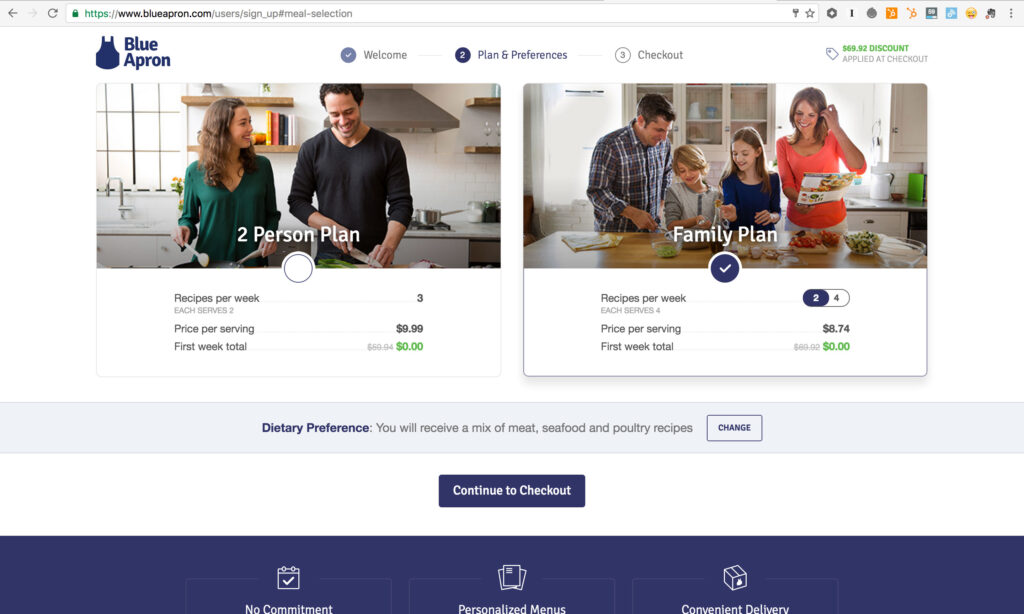
2. Personalized Meal Plans: Catering to Every Dietary Desire
In today’s world, dietary needs and preferences are diverse. Your app needs to cater to this variety to truly shine. Here’s how:
- Tailored Recommendations: Utilize user data (dietary restrictions, allergies) and preferences (cuisine styles, health goals) to recommend personalized meal plans.
- Dietary Filters: Allow users to easily filter meal plans based on specific dietary needs (vegetarian, vegan, paleo, keto, etc.) and allergies.
- Swappable Options: Empower users to swap out ingredients within meals to cater to individual preferences or dislikes. Some services, like Sun Basket, allow complete customization of each meal.
Sun Basket provides tailored meal plans for various dietary needs, such as paleo, gluten-free, and vegan, whereas Green Chef offers organic ingredients and meal plans catering to keto, paleo, and balanced living.
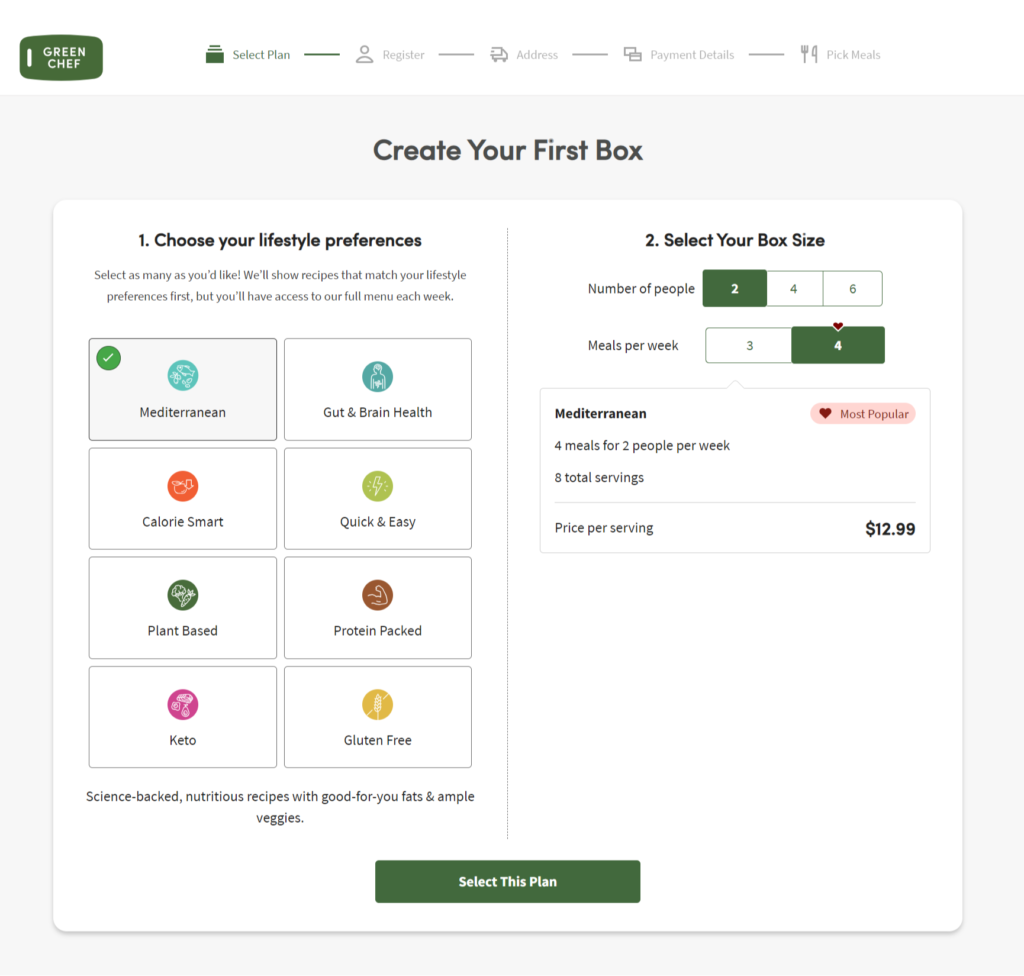
3. Subscription Management: Putting Users in Control
Flexibility is key! Users should be able to manage their subscriptions seamlessly:
- Easy Modifications: Allow users to effortlessly modify their subscription plans (number of meals, delivery frequency).
- Clear Interface: Provide a user-friendly interface for managing delivery schedules, skipping weeks, or pausing subscriptions.
- Transparent Communication: Clearly communicate upcoming deliveries, order cut-off times, and any changes to subscription options.
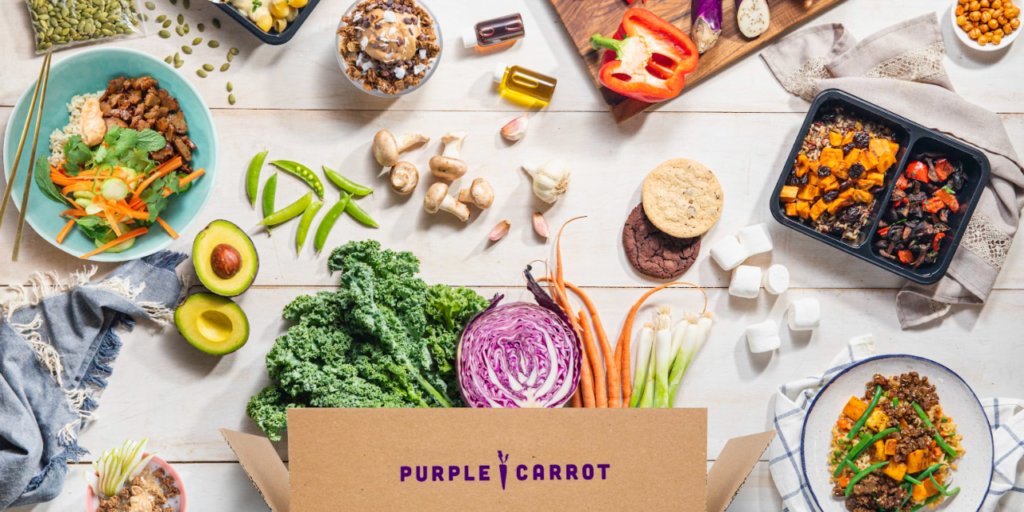
4. Seamless Payment Integration: A Secure and Streamlined Checkout
- Multiple Payment Options: Integrate secure payment gateways to offer users flexibility in payment methods. Popular payment gateways include:
- Stripe: Known for its easy integration and wide range of payment options. It charges 2.9% + $0.30 per successful card charge.
- PayPal: Widely recognized and trusted by users. Standard transaction fees are 2.9% + $0.30 for sales within the US.
- Square: Offers a comprehensive suite of payment processing tools. Its fees are 2.6% + $0.10 per transaction.
- Razorpay: Popular in India, it supports various payment methods with a fee of 2% per transaction.
- Clear Pricing: Display all costs upfront, including any delivery fees or taxes, to avoid surprises at checkout. Transparent pricing helps build trust and reduces cart abandonment rates/
- Secure Transactions: Ensure PCI compliance and utilize secure encryption methods to protect user financial information. This includes using SSL certificates and adhering to the latest security protocols to safeguard data during transactions.
- Trial Period and Flexible Cancellation: Offering users a trial period, such as a 3-day or one-week trial before committing to a monthly plan, can build trust and allow them to experience the service risk-free. Additionally, providing an option to cancel anytime with a refund can further enhance user confidence and satisfaction.
5. Real-Time Order Tracking: Transparency from Kitchen to Doorstep
Keeping users informed about their meals with real-time order tracking is essential for enhancing the customer experience and ensuring transparency. Here are some key elements to consider:
- Live Updates: Provide real-time tracking of orders from preparation to delivery, including estimated arrival times. This helps customers plan their day better and increases their satisfaction.
- Push Notifications: Utilize push notifications to keep users updated on the status of their orders. Notifications can include updates on order confirmation, preparation, dispatch, and delivery status.
- Delivery Notifications: Send alerts when meals are out for delivery or have arrived. This ensures users are prepared to receive their meals promptly and helps in reducing missed deliveries.
By implementing these payment solutions and offering flexible trial and cancellation options, meal subscription apps can provide a seamless and secure checkout experience, enhancing customer satisfaction and trust.
Integrating Delivery or Logistics Companies
To streamline the delivery process and save time on building an in-house delivery team, consider integrating with established delivery and logistics companies. Here are some top options:
- Uber Eats: Provides a robust delivery network that can be integrated into your app. It offers reliable and widespread coverage, making it an excellent option for meal subscription services.
- DoorDash: Known for its extensive delivery fleet and real-time tracking capabilities. Integration with DoorDash can ensure timely and efficient delivery of meal kits.
- Postmates: Offers flexible delivery solutions with a strong emphasis on real-time tracking and customer satisfaction. Postmates can handle peak times efficiently.
- Delhivery: Particularly popular in India, Delhivery provides comprehensive logistics solutions, including last-mile delivery, which can be seamlessly integrated into your app.
Advantages of Integrating with Established Delivery Services
- Cost-Effective: Saves the substantial initial investment required to build and maintain an in-house delivery team.
- Scalability: Easily scalable as your business grows without the need to hire additional staff or invest in more vehicles.
- Expertise: Leverages the expertise and infrastructure of established companies to ensure reliable and timely deliveries.
By integrating with these delivery and logistics companies, meal subscription apps can provide real-time order tracking and reliable delivery services without the overhead costs of managing an in-house team. This approach allows businesses to focus on their core competencies while ensuring a superior customer experience.
6. Customer Feedback and Reviews: Building Trust Through User Input
Feedback is invaluable for continuous improvement and building customer trust. Here’s how to leverage customer feedback effectively:
- Review System: Implement a user review system to gather feedback on meal options, delivery experience, and overall satisfaction. A well-structured review system can provide insights into what works well and what needs improvement.
- Respond to Reviews: Actively respond to user reviews, both positive and negative. Addressing concerns and showcasing your commitment to improvement can enhance customer loyalty and trust. Make it a practice to thank users for positive feedback and provide solutions or compensations for any issues raised.
- Utilize Feedback: Analyze customer feedback to refine meal options, improve service quality, and personalize the user experience. This data-driven approach helps in adapting to customer preferences and staying ahead of competitors.
7. Integrating AI Chatbots for Enhanced Customer Feedback
AI chatbots can significantly enhance the customer feedback process by providing instant responses and gathering valuable insights:
- Real-Time Interaction: AI chatbots can interact with customers in real-time, collecting immediate feedback after meal deliveries. This helps in capturing fresh and relevant insights.
- Automated Responses: AI chatbots can provide automated responses to common queries and issues, ensuring customers feel heard and supported. They can also escalate more complex issues to human support staff.
- Sentiment Analysis: Advanced AI chatbots can perform sentiment analysis on customer feedback, helping to identify overall satisfaction levels and areas needing improvement.
Top AI Chatbot Apps for Integration
- Zendesk Chat
- Features: Real-time messaging, AI-driven responses, sentiment analysis, integration with various platforms.
- Use Case: Many e-commerce and service-oriented businesses use Zendesk Chat for real-time customer support and feedback collection.
- Intercom
- Features: Customizable chatbots, user segmentation, automated workflows, detailed analytics.
- Use Case: Popular among tech startups and subscription services for its powerful automation and user engagement capabilities.
- Drift
- Features: Conversational AI, lead generation, real-time support, integration with CRM systems.
- Use Case: Used by B2B companies to automate customer interactions and gather feedback efficiently.
- LivePerson
- Features: AI-driven messaging, voice assistants, secure payment processing, multi-channel support.
- Use Case: Utilized by large enterprises for scalable customer support and feedback management.
- Tidio
- Features: AI chatbots, live chat, email integration, analytics.
- Use Case: Preferred by small to medium-sized businesses for its ease of use and robust features.
Next-Level Features to Make Your Meal Subscription App Shine
To stand out in a competitive market, consider incorporating these innovative features into your meal subscription app:
1. Food Donation Option
Instead of canceling an order, allow users to donate their meal to the needy. This not only reduces food waste but also positions your brand as socially responsible. Instead of canceling an order, allow users to donate their meal to the needy. This not only reduces food waste but also positions your brand as socially responsible. Sunbasket champions food waste reduction. They donate 1,000 pounds of food weekly to food banks and let users donate their unused meals, ensuring nutritious options reach those in need.
2. Glimpse of Your Kitchen
Give customers a behind-the-scenes look at your kitchen, chefs, and meal preparation processes. This transparency builds trust and a personal connection with your business. For example, Blue Apron and HelloFresh often share videos and images of their kitchen operations and chefs at work, creating a more engaging and trustworthy experience for users.

3. Sustainability Initiatives
Highlight your commitment to sustainability by using eco-friendly practices, such as sustainable packaging and sourcing locally-grown ingredients. Green Chef and Sun Basket emphasize their use of organic ingredients and recyclable packaging, appealing to environmentally conscious consumers.
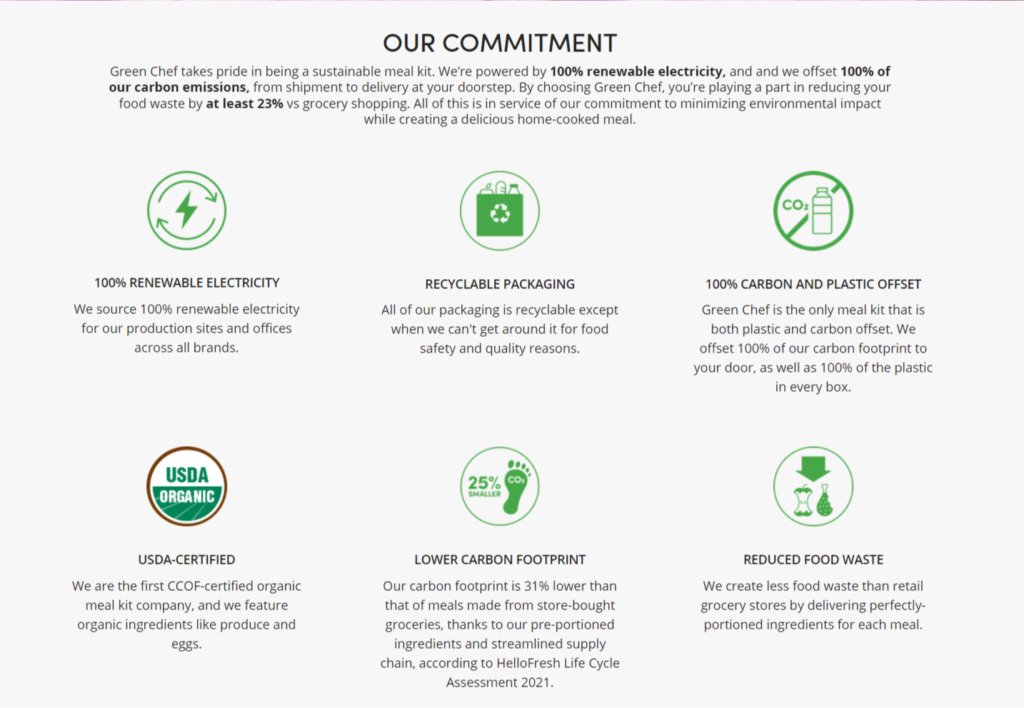
3. Dietary Intake Graphs
Provide users with detailed dietary intake graphs, showing their consumption of carbs, proteins, calories, and other nutrients. This feature helps users monitor their dietary habits and make informed decisions about their meals.
Purple Carrot offers users access to detailed nutritional information for each meal. Additionally, the app allows users to filter recipes based on their dietary needs and preferences, promoting a balanced and personalized approach to healthy eating. While not offering graphs directly, Snap Kitchen provides users with clear nutritional breakdowns for each meal on their menu. This empowers users to track their daily intake and make informed choices based on their dietary goals.
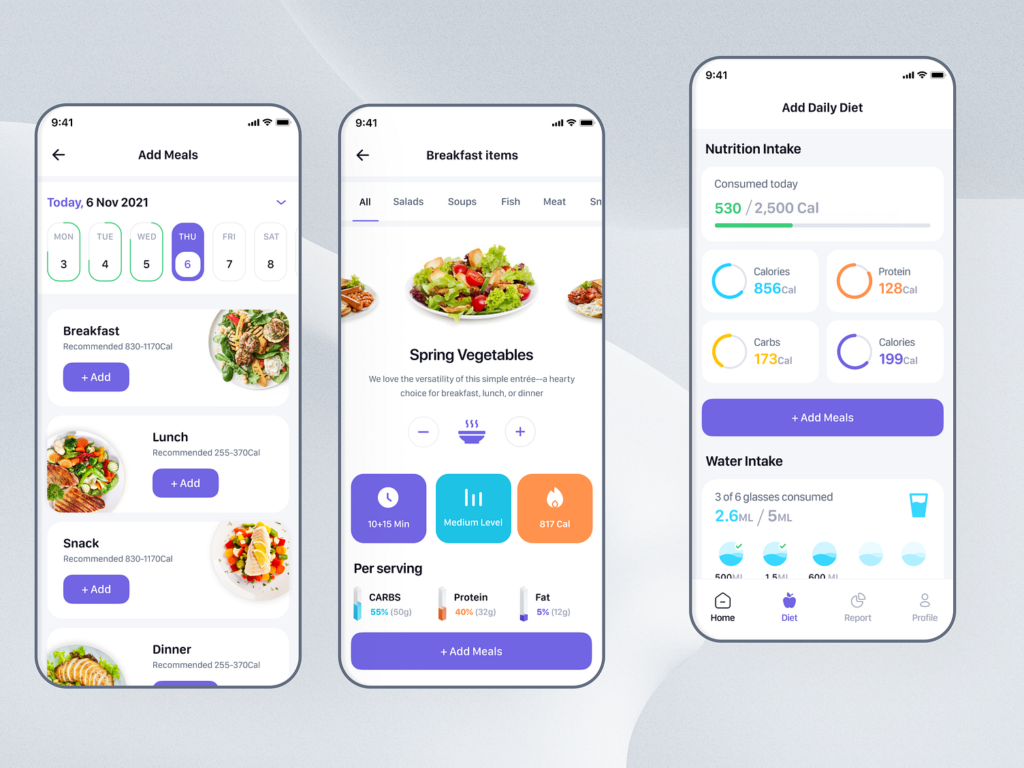
5. Trial Periods
Offer a 3-day or one-week trial before customers commit to a monthly plan. This builds trust and allows potential users to experience your service without long-term commitment.
6. Integration with ONDC
Integrating your meal subscription app with the Open Network for Digital Commerce (ONDC) can significantly enhance operational efficiency and reach. ONDC provides a unified digital platform that connects buyers, sellers, and service providers across various sectors. Here’s what you can do to leverage ONDC for your meal subscription app:
- ONDC Buyer Apps: Integrate your app with existing ONDC buyer apps. These apps allow users to discover and purchase products and services from various sellers listed on the ONDC network. Popular examples include PhonePe, Paytm, Mystore, and others. By integrating with these apps, your meal subscription service becomes discoverable to users searching for food or meal kit options within the ONDC network.
- Partner with Existing ONDC Sellers: Explore partnerships with established sellers already listed on ONDC. Perhaps local grocery stores or food delivery services could offer your meal kits as part of their product selections. This would leverage their existing ONDC presence to showcase your meal subscription offerings.
By leveraging ONDC, your app can:
- Expand Reach: Reach a wider audience by tapping into ONDC’s extensive network of buyers and sellers.
- Streamline Transactions: Simplify the buying process with seamless transactions and secure payment gateways.
- Enhance Visibility: Increase visibility and discoverability for your meal subscription service on ONDC’s digital marketplace.
5. Integration with Restaurant / Cloud Kitchen Management Apps
Integrating your meal subscription app with restaurant management apps like Petpooja can streamline operations and improve customer relationship management. These integrations offer features such as:
- Inventory Management: Track inventory levels, manage stock, and streamline procurement processes with Petpooja.
- Order Management: Streamline order processing, automate workflows, and ensure timely delivery of meals with Petpooja.
Top Meal Subscription Apps
International
| App Name | Country | USP |
|---|---|---|
| HelloFresh | International (US, Canada, UK, Australia, New Zealand) | Fresh, seasonal ingredients, wide variety of meal plans (vegetarian, low-carb, family-friendly) |
| Blue Apron | US | High-quality ingredients, focus on gourmet recipes |
| Sunbasket | US | Organic and sustainable ingredients, Paleo, Keto, and Mediterranean meal plans |
| Home Chef | US | Easy-to-follow recipes, shorter prep times |
| HelloFresh Germany | Germany | Focus on fresh, local ingredients, portion control options |
| Marley Spoon | International (US, Australia) | Pre-portioned ingredients, chef-designed recipes |
| Gousto | UK | Restaurant-quality recipes, diverse meal options |
| Dinnerly (HelloFresh) | US | Affordable meal kits with simple recipes |
| Purple Carrot | US | Plant-based meal kits, diverse vegetarian and vegan options |
| RightRice | US | Healthy meal kits with low-carb cauliflower rice base |
India
| App Name | Country | USP |
|---|---|---|
| HelloFresh India | India | Fresh, seasonal ingredients, wide variety of meal plans (vegetarian, low-carb, family-friendly) |
| FreshMenu | India | Wide variety of Indian & international cuisines, new dishes added weekly |
| Sprig | India | Healthy & nutritious meals, organic ingredients whenever possible |
| HungerBox | India | Caters to office-goers, corporate meal subscriptions |
| Ovenstory | India | Freshly baked breads, gourmet desserts, ready-to-eat meals |
| EatFit | India | Healthy & customized meal plans for weight loss or muscle gain |
| TingTing | India | Bengali cuisine, regional specialties |
| Yogify | India | Chef-curated meals, clean eating, sustainability |
| Power Salad | India | Healthy & delicious salads with fresh, seasonal ingredients |
| InnerChef | India | Restaurant-quality meals prepared by home chefs |
Choosing the Right Technology Stack for a Meal Subscription App
Selecting the right technology stack is critical to the success and scalability of your meal subscription app. Here’s a detailed breakdown of recommended technologies for different components of your app:
Web Framework
- ReactJS: Known for its component-based architecture and strong community support, ideal for creating dynamic and responsive user interfaces. HelloFresh uses ReactJS for a seamless web experience.
- AngularJS: Offers a robust framework for building dynamic web applications, with features like two-way data binding and dependency injection. Green Chef leverages AngularJS for its dynamic web application.
- Vue.js: lightweight and beginner-friendly framework, great for building interactive web interfaces with ease.
Mobile Framework
- React Native: Enables cross-platform development, allowing you to build iOS and Android apps with a single codebase. It also offers native performance and a rich ecosystem.
- Flutter: Provides a rich set of pre-designed widgets for a consistent user experience across different devices, ideal for cross-platform development.
Backend Technology
- Node.js: Known for its event-driven, non-blocking I/O model, ideal for building scalable network applications and using JavaScript on the server side. Hello Fresh uses Node.js for its backend to handle high traffic efficiently.
- Django (Python): A high-level Python web framework that encourages rapid development and clean, pragmatic design. Comes with built-in features for security and scalability.
- Ruby on Rails: Known for its rapid development agility, Ruby on Rails is an excellent choice for startups and projects with evolving requirements. Blue Apron is built on top of Ruby on Rails.
- Spring Boot (Java): Recognized for its enterprise-grade robustness, providing a well-established ecosystem suitable for large-scale applications.
Database
Choose databases that align with your scalability and flexibility requirements, ensuring your app can handle large volumes of data efficiently.
- PostgreSQL: Known for its scalability and robust data integrity, supports complex queries and is popular for applications requiring extensive data analysis and reporting.
- MySQL: Recognized for its reliability and ease of use, suitable for large-scale applications with high transaction volumes. HelloFresh employs MySQL for its database management.
- MongoDB (Serverless): A NoSQL database that provides flexibility and scalability, ideal for applications requiring a flexible schema design and rapid iteration.
Microservice Architecture
Microservices can significantly enhance the scalability and maintainability of your app. They allow different parts of your application to be developed, deployed, and scaled independently.
- Kubernetes: Facilitates the deployment, scaling, and management of containerized applications, ensuring efficient resource utilization and high availability.
- Docker: Provides containerization, allowing your application to run consistently across different environments and simplifying deployment.
- Apache Kafka: Enables real-time data streaming and integration, making it easier to process and analyze data from various microservices.
RESTful APIs
Develop RESTful APIs to ensure seamless integration with third-party services. This will facilitate functionalities such as real-time tracking, secure payments, and personalized user experiences.
Additional Technologies
Opt for databases that align with your scalability and flexibility requirements
- Cloud Services: Use AWS, Google Cloud, or Azure for scalable hosting solutions.
- Payment Gateways: Integrate secure and flexible payment gateways like Stripe, PayPal, and Razorpay.
- AI Chatbots: Implement AI chatbots like Zendesk Chat, Intercom, Drift, LivePerson, and Tidio to enhance customer support and feedback mechanisms.
- Analytics: Utilize tools like Google Analytics and Mixpanel for tracking user behavior and app performance.
- Security: Ensure your app complies with security standards like PCI DSS for payment processing and uses secure encryption methods for data protection.
By selecting a technology stack that balances performance, scalability, and flexibility, you can build a robust and user-friendly meal subscription app capable of growing with your business.
DevOps
DevOps is the beating heart of effective software development, unifying development and operations to enhance collaboration, shorten development cycles, and deliver high-quality software. Here’s a breakdown of key DevOps practices:
- Git for Version Control: Ensure a collaborative and organized development environment with Git, allowing teams to track changes, manage code, and work seamlessly.
- CI/CD Pipelines: Implement Continuous Integration (CI) and Continuous Deployment (CD) pipelines to automate testing, integration, and deployment processes. This ensures consistent code quality and rapid delivery.
- Containerization with Docker: Use Docker for containerized development. Containers encapsulate applications and their dependencies, providing consistency across various environments.
In addition to the above practices, DevOps encompasses other crucial elements:
- Infrastructure as Code (IaC): Treat your infrastructure as code, enabling automated and reproducible infrastructure provisioning and management.
- Monitoring and Logging: Implement robust monitoring and logging solutions to gain insights into application performance and troubleshoot issues efficiently.
- Collaboration Tools: Utilize collaboration tools like Slack, Jira, or Microsoft Teams to enhance communication and coordination between development and operations teams.
DevOps is a holistic approach that goes beyond version control, CI/CD, and containerization. It embraces a culture of collaboration, automation, and continuous improvement throughout the software development lifecycle.
Wrapping Up: Building the Future of Meal Subscription Apps
In conclusion, the meal subscription app market presents a lucrative opportunity for entrepreneurs to capitalize on the growing demand for convenient and personalized meal solutions. By leveraging technological advancements, understanding market trends, and incorporating innovative features, you can create a compelling and competitive meal subscription app that delights customers and drives business growth.
As you start your journey to launch a meal subscription app, consider partnering with a trusted technology partner like Wolfpack. At Wolfpack, we specialize in developing cloud kitchen, meal subscription, and on-demand applications tailored to meet the unique needs of your business. From ideation to deployment, our team of experts will work closely with you to bring your vision to life and deliver a seamless and scalable solution that sets you apart in the market.
With Wolfpack by your side, you can confidently navigate the complexities of the meal subscription app landscape and position your business for success in the digital age. Let’s collaborate to build the future of meal subscription together.
Reach out to Wolfpack today and start your journey toward culinary innovation and business excellence.